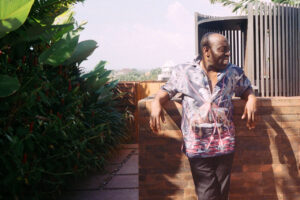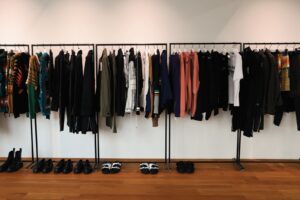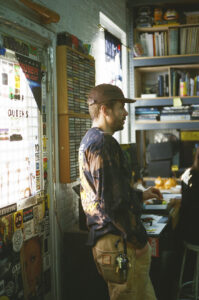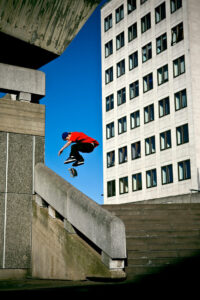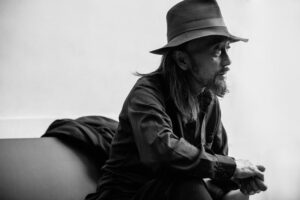This story was originally published in issue #16 of Highsnobiety Magazine and was written and produced by FM Belowground project director Arthur Bray.
Words: Arthur Bray
Photography: Takeshi Matsumi
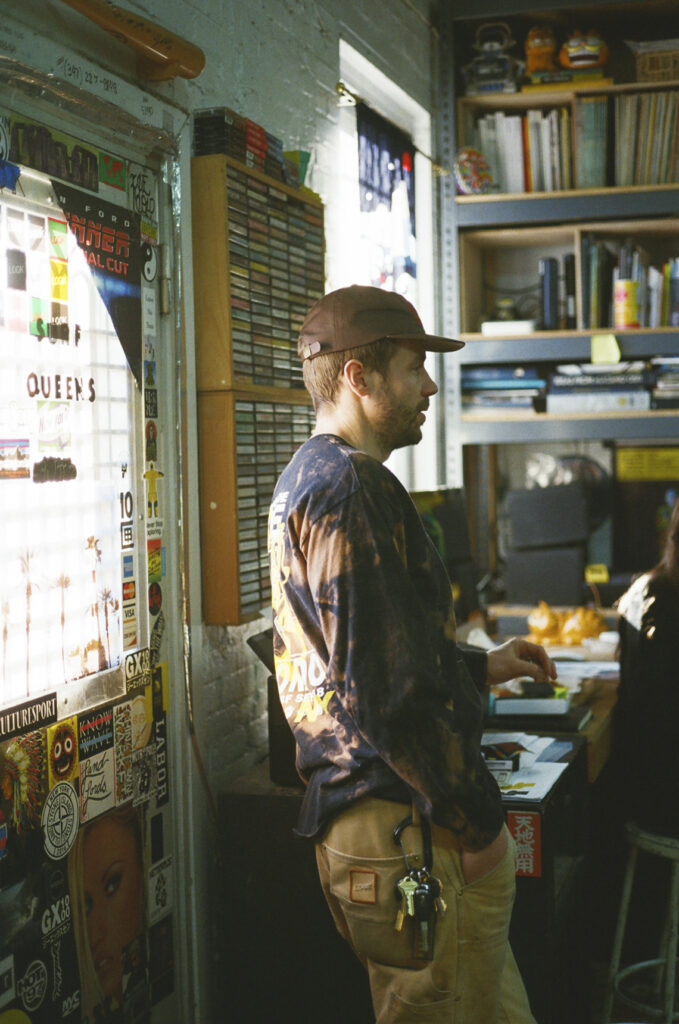
Enter LQQK, a studio-cum-brand helmed by a collective of New York artists, DJs and DIY types that are using age-old print techniques to carve out fresh paths in fashion.
With the door flung wide open, passersby are invited to poke their heads through the tassel curtains into the world of LQQK. Founded by Alex Dondero, the Bushwick print studio is where the ideas of New York’s art community and fledgling brands come to fruition. Printing machines sit atop Oriental rugs, while turntables and shelves filled with records host the studio’s impromptu parties and weekly show on community radio station Know Wave, founded by gallerist Aaron Bondaroff.
LQQK was launched in 2011 primarily as a T-shirt printing workshop catering to the city’s brand owners. Yet in recent times, its in-house apparel line has gained notoriety in the street fashion landscape both locally and in Japan, collaborating with the likes of N.HOOLYWOOD and Van’s lifestyle Vault line, in addition to holding pop-ups in Dover Street Market. Disregarding seasonal release schedules, LQQK drops products at a whim with each run capped at 250 units, all of which sell out upon release. This approach of controlled supply resulting in scarcity is akin to the format set by streetwear patrons like Supreme or Palace. Yet Dondero notes that this system is simply driven by the practicality of “not having things sit around.”
The workspace may seem chaotic at first glance, yet Dondero’s mastered a workflow that’s earned his business an impressive client list. “Andrew Richardson asked Belladonna to sign this bat for me when A6 came out,” said Dondero as he shared with us various memorabilias passed on by friends and mentors. LQQK’s client portfolio includes some of art and fashion’s most revered (from Tom Sachs to Yeezy), yet Dondero’s adamant that these should not be confused as collaborations. “They’re hiring us for a service. I don’t want to dilute their brand image even if some of the clients are on our list of dream collabs.” Ensuring each project lives in its own lane is a calculated discernment, especially rare when brand co-signs have become a swift currency for success in the fashion industry.
A self-proclaimed control freak, Dondero’s knack for detail and efficiency has fuelled work in a fierce market held up by a friend-of-a-friend referral system. Through word of mouth, LQQK’s commercial work has allowed the team to create apparel without financial pressure, along with other ventures such as their record label, 369. “The commercial printing provides the opportunity to create different mediums to express ourselves, whether that’s radio, a brand or parties. These things add to our identity and speak to an audience that might not be into screenprinting or graphics,” said Dondero.
The studio’s rejection of robotic digital printing for silk-screen hand printing exemplifies Dondero’s core approach to create on his own accord. With DIY ideologies running deep, the crew adheres to authenticity irrespective of trend forecasts. “We don’t want to be hyper aware, because that’s when bad decisions happen.”
We caught up with Dondero and production manager Paul Bryant to learn more about LQQK’s structure and the importance of longevity in streetwear.
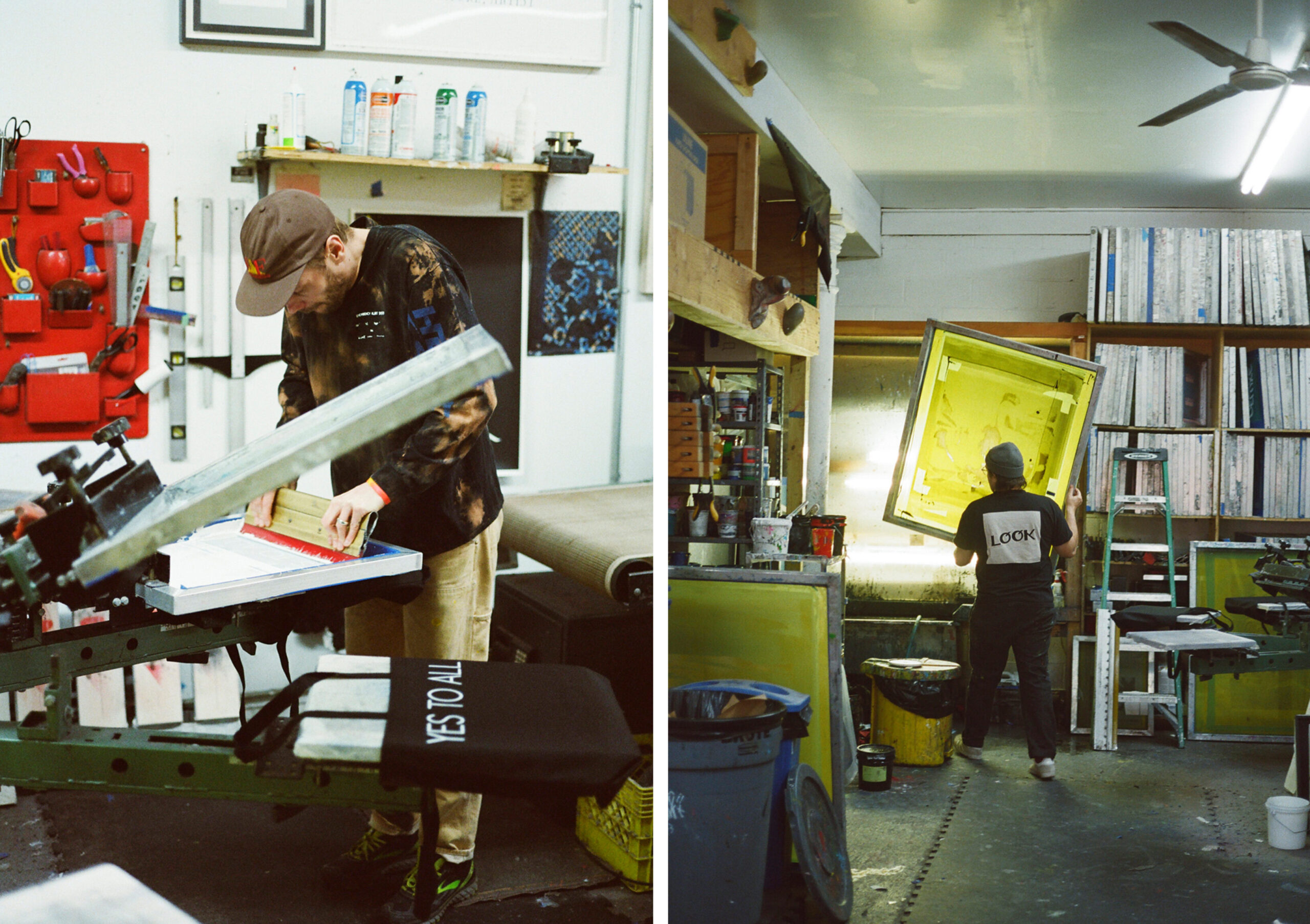
Can you introduce LQQK Studio?
AD: I founded the studio as a screen printing shop, and through that I met a lot of like-minded people like Paul. I’m the sole printer. I print 80 percent of the stuff that comes out of the studio. Paul is a huge creative force that helps with the brand. He’s not tied to any commercial printing. He oversees the production, from sourcing fabric to coming up with inspirations. Paul is obsessed with techniques and textures. Joe Garvey helps runs the operations. He’s also got an active art career, so he also does the graphics with help from Toya Horiuchi.
PB: There’s no defined crew or employee, LQQK Studio is this ever-changing situation.
AD: The service that we offer continues to change. But it’s not just one person’s energy, it’s a collective energy. It’s not like everyone’s on payroll but hopefully everyone gets what they want out of this ongoing project.
When did the print shop launch?
AD: I was printing through college, then I set up a shop in Baltimore before moving to New York. I was going back and forth between both cities printing. Eventually, I moved all the equipment to New York and settled in with a bunch of friends in 2010/ 11. We outgrew that space then moved to this Brooklyn location and have been here for five years. Things started to shape up here.
How did you two first meet?
AD: Paul and I first bonded over clothes. Paul was working for Patrik Ervell and I was doing prints for him at my studio. Patrik was a dream client to work for because I looked up to his work. He really helped me find an appreciation for menswear. He knows how to make classic styles feel accessible. That shirt that I learned to love, I know he’s going to make that again in a different way next season, and I know I’ll love it because it’s the same pattern but modernised.
I was tripping when I got patched to do work with him. I was so eager to be involved, I personally brought stuff to their studio. We did some wild projects together, experimenting with dye techniques and prints. Paul was his production guy. When we met I immediately knew we were on a similar wavelength.
This was all pre LQQK Studio?
AD: Yep. What connected us was Patrik, but my good friend Martin Davis helped lock things tighter. Martin’s an integral part of LQQK and helped keep the lights on to my shop and ensured the rent was paid. He was also the manager at Supreme. I intro’d Paul to Martin, and when Paul left Patrik Ervell, Martin intro’d him to the guys at Supreme, and he ended working in production there. Martin is a huge part of LQQK’s construction. I’m pretty sure it was actually his idea for us to launch more T-shirts and make a brand. We were just doing a few shop shirts for friends before that.
Why does having a brand make sense to a print studio like LQQK?
PB: To have a clothing brand for us makes as much sense as ‘90s music label Nervous Records having a clothing brand. Launching the brand came from our ability to pivot. Nervous made dance records that had commercial success, but also made random and wild merch that didn’t outlive the record label. The merch still has relevance. You see vintage Nervous Records garments, and the two entities complement each other. This print shop represents a community and certain people, and so does Nervous Records.
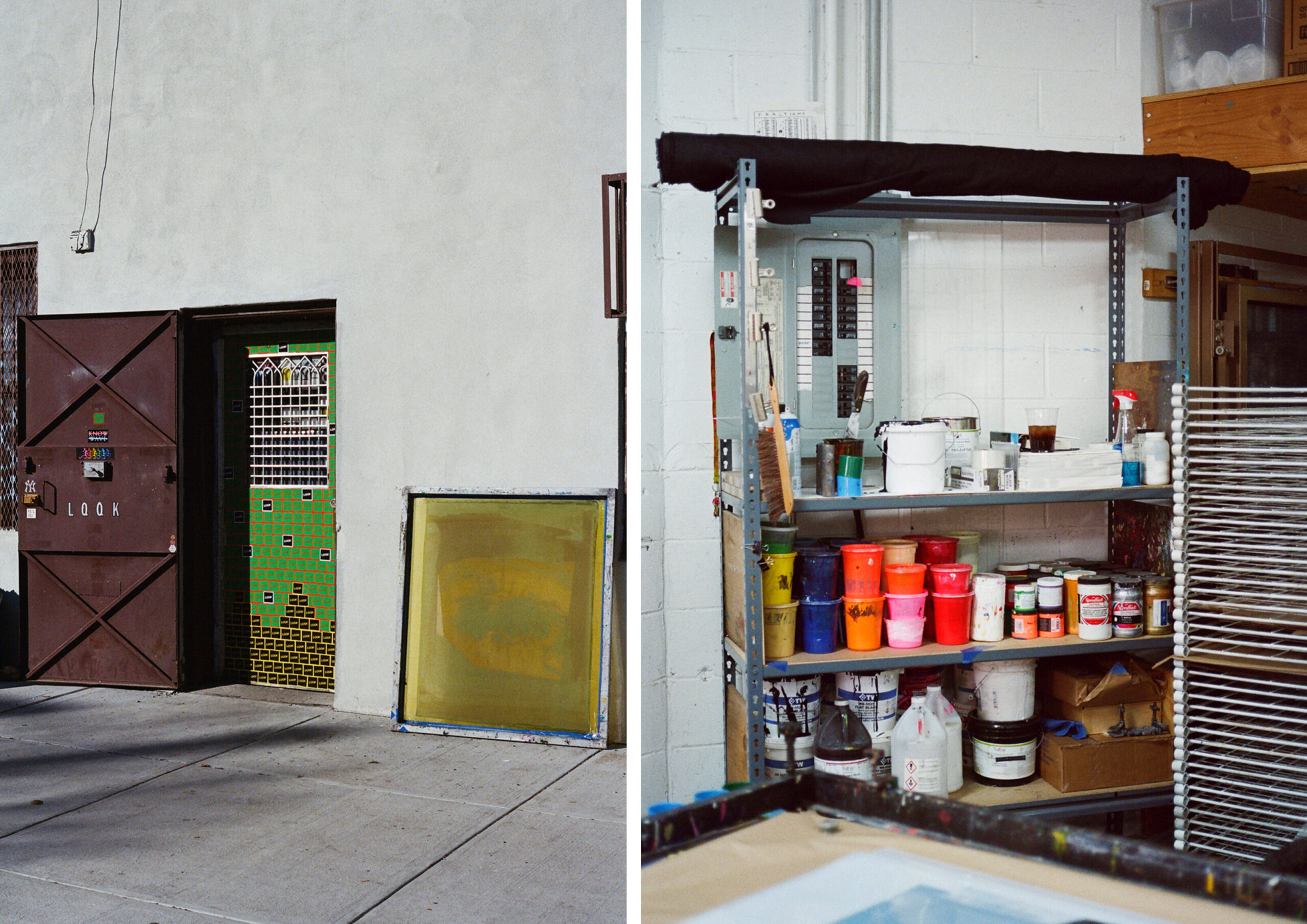
Merch is a word often used in streetwear today. Do you think it’s a dirty word?
PB: No in fact we embrace it. It’s an opportunity to showcase our abilities in another medium. A lot of merch brands have appeared in recent years, like the publication ‘032c’ and its recent brand extension. Everyone needs an access point that speaks to them. As long as both mediums are genuine, then neither side suffers.
AD: We’re a studio that provides services screen printing. The apparel showcases our ideas, and our Know Wave show is like the soundtrack to the studio. We might not be selling our shirt to every store that asks, but we’re diverse in what we do: commercial printing, we’re DJs with a radio show, and we’re a brand. All these other things help create identity to what we are through the eyes of different audiences.
Many brands follow a structured roll-out schedule, planning around key dates on the fashion calendar. Does this apply to LQQK?
AD: Beside a few scribbles somewhere on the whiteboard, there’s no real roll-out plan. If you’re worried about your market before you worry about what you’re actually making, then you’re in the wrong business. I know people that kill themselves for their artwork but don’t have gallery representation, yet you couldn’t keep them from making their art. They don’t have a market, they’re not selling their shit anyway. My point is, there’s too many people who care too much about the market. Everyone’s got to live but everyone’s got to be flexible.
So what are you worried about?
AD: I’m not worried about what market we fit into because I’m more worried about what it is that I’m doing. It’s like the whole “I’ve got to make something for the art fair mentality.” No, you need to make shit that you care about, you shouldn’t even know when the art fair is. It shouldn’t even be on your mind. This mindset drives a lot of people. Once you’re really aware of what you’re doing, you end up making conscious decisions.
By not working with a specific release schedule, how does this affect your relationship with retailers?
PB: We want to work with people who respect our approach and aren’t necessarily concerned with a six month or one year release schedule. We’ll come up with an idea and see if they’ll buy it. Sometimes, we have designs that make it onto print and we’ll get a batch done, then we find that we don’t really like the way it looks. There have been times when we’ve shown stores a design that we’re going to make and they buy it, but when it comes to delivery, we’ve altered the design.
AD: Because I’m actually printing the tees on the press, and I can make snap decisions and change the way certain things are printed.
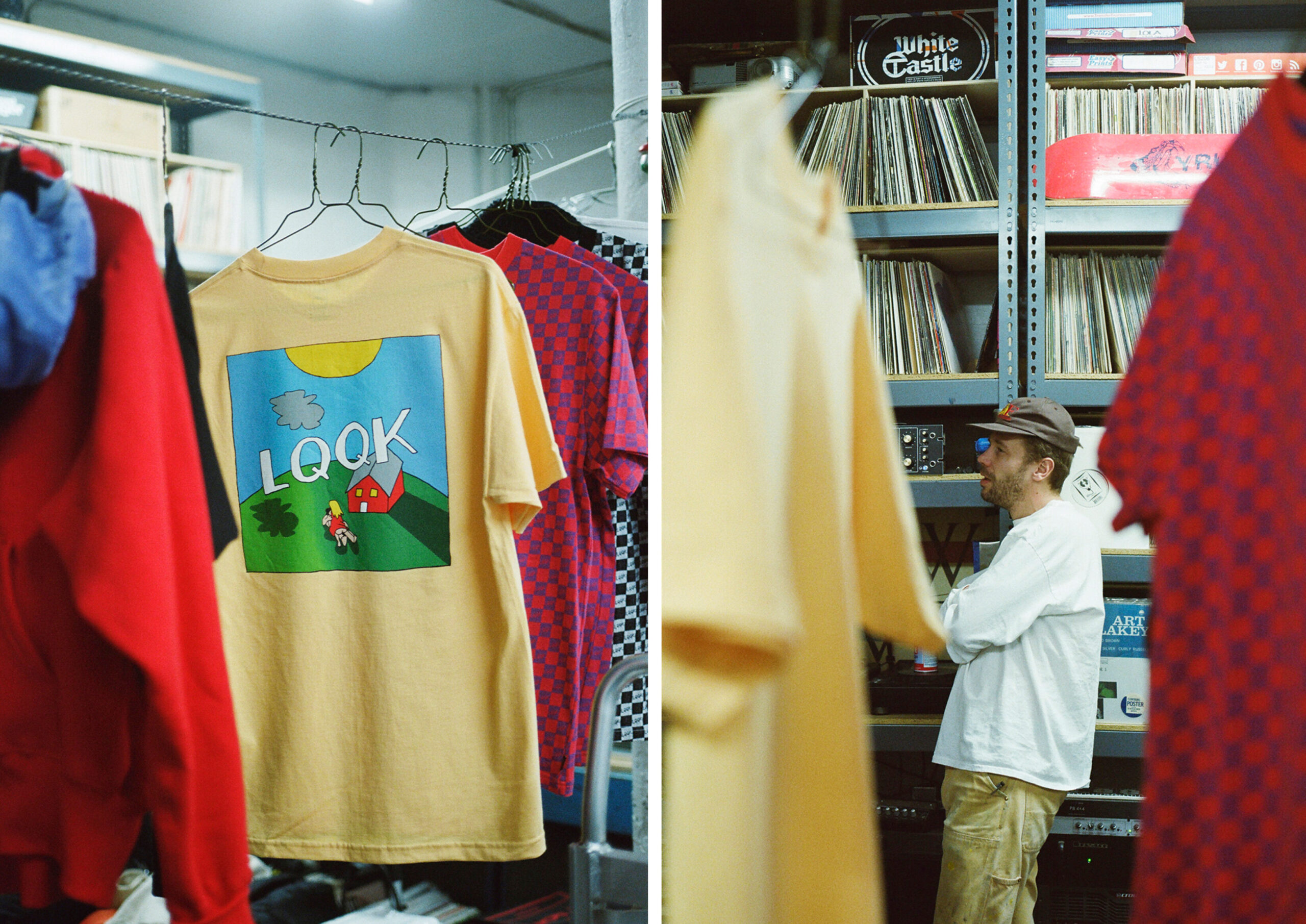
Why is it important to have control versus pandering to the norms set by the fashion industry?
AD: I find the wholesale system fraudulent. You end up making more products than you feel comfortable making. For example, I might not want to make 100 T-shirts but the store has a minimum order, and we’re in five accounts so suddenly I have to make 500 T-shirts. Immediately I’ve already lost a bit of control by making an amount I’m not comfortable with and selling it cheaply.
The minute stores have your brand, they can do whatever they want. They can style it on a clown, they can light it on fire, or sell it for cheap. Immediately, you’ve lost control on something you’ve worked hard to build. To me, that’s problematic. I think all you can do is trial and error. You can sell to a store, see how it moves or is styled then revisit the idea next season. I see us in the long game, so having the control early is important. We’re opening up to more retailers now, but online stores and pop-ups are the best ways for us to tell our story.
T-shirt printing aside, you guys have also gone into cut and sew. Does LQQK want to eventually launch full seasonal collections?
PB: We want to do more cut and sew, but we also want to grow the brand organically. We’re not trying to pressure ourselves to do seasonal drops.
AD: Another main principle is “just because you can print on something doesn’t mean you should.” We try to be as design focused as possible, not print focused. We want to make the best designed garments and have come to terms with using embroidery on fleece and sweatshirts. We can save money by printing but it won’t look that good, so cut and sew or embroidery serve a purpose in helping us create quality designs.
You guys have worked with many high profile clients. How do these relationships develop?
AD: It’s New York. Everyone fuels clients, and we have to make sure we don’t get out-priced and that our output is on point. I can beat myself up over our shit not getting printed on time, but I can’t let other people’s stuff come out late. If you commit to a print job, you really have to do your best to deliver on time. We don’t have a client list online or boast what we print for people, so word of mouth is all we’re relying on.
You guys have worked with a lot of different creatives that are also your peers. Do people ever confuse client work with an actual collaboration?
AD: When people name-drop projects we’ve worked on, it makes me cringe a little because I didn’t tell you that, it’s rumor. We printed for Richardson but it’s not like we’re collaborating with Richardson. There’s a difference, and he may tell you we’ve worked together but it’s not openly advertised because he’s paying for a service. There are certain projects where clients don’t want to share too much information. I fully come to terms with the fact that just because I printed on a T-shirt doesn’t mean it’s a collaboration. You don’t want people to feel exposed or that you’re unprofessional.
Staying authentic is important to LQQK. How do you ensures things stay true to the brand?
AD: We flesh ideas out and say “no” to a lot of things. Most ideas don’t see the light of day. In three hours of talking you might only see one idea come to fruition. We have limited time and limited budget. If we want to make something, it needs to be money well spent. There needs to be enough self confidence where I can shoot down an idea Paul has and vice versa. It’s important to put our egos aside when brainstorming.
PB: I think a lot of it really comes down to “would I wear that?”.
You guys have collaborated with Vans, N.HOOLYWOOD and others. What makes sense as a LQQK collab?
AD: The collaboration has to provide a product that we can’t produce ourselves. Vans is a perfect example because we can’t make sneakers. When Vans reached out, we were 100 percent down. Our collection was inspired by sneakers that we would ourselves wear, the bright colors pay homage to loud street style from yesteryears.
How did you guys link up with Know Wave?
PB: Aaron [Bondaroff] came to Alex to put on a weekly show. Then that became another outlet in terms of how others can experience us. We tend to put together the flyers last minute. Music wise, everyone goes off on their own direction but there are some overlaps.
I was going through a phase regarding Tina Turner records, and Alex wasn’t feeling it. Meanwhile, Max Feur is out buying ambient trance compilation.
Judging by the wall of records, there’s no doubt music plays a formative role in LQQK Studio.
AD: Yeah, but I don’t associate myself as a DJ. I like playing records but that title is so loaded. If I had the option of either having a record collection or be a successful DJ, I’d buy records. My passion for music comes from collecting records and Doing is a perfect channel for me to play them out. I’m buying records that I would like to share versus I want to be a DJ, hence I’m buying records.
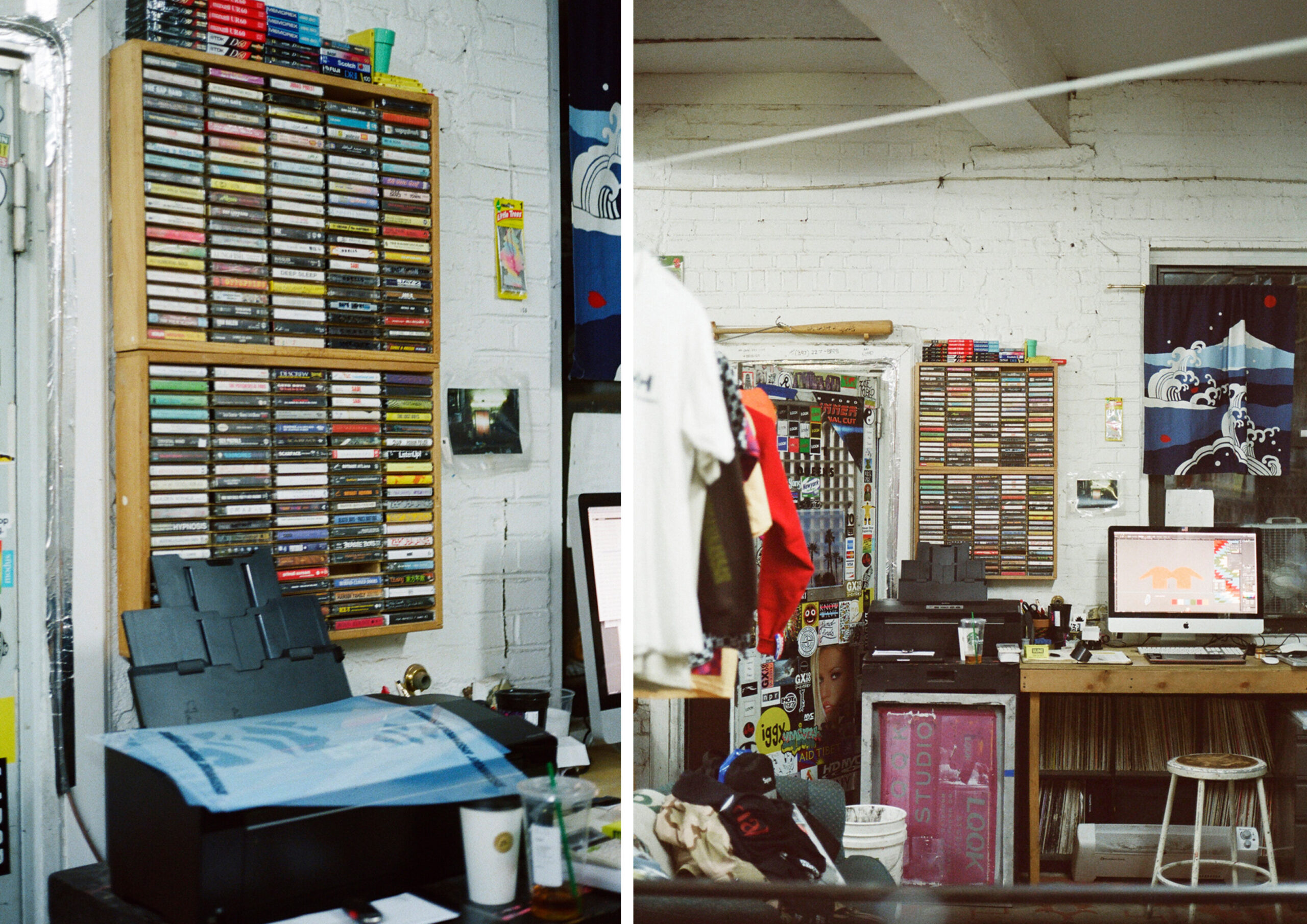
How does the LQQK Studio complement Know Wave and vice versa?
AD: Know Wave is family. LQQK and Know Wave are mutually beneficial. We legitimise each other. They’re not corny, we’re not corny. I don’t have time to run a SoundCloud that’s dialled in. They do. Know Wave can be our outlet for our audio. They need legitimate and active people in the scene to share music, we can do that.
LQQK and Know Wave both have apparel brands that represent New York’s creative communities. Do the brands help pay for everyone’s efforts?
AD: Like other creative communities we work with, we printed Know Wave’s tees in the past. We’ve seen it grow and have been with it in spaces where it either outgrew or got evicted. Aaron Bondaroff doesn’t want to be a babysitter, he wants Know Wave to be organic but also understands that there needs to be a financial aspect to it hence the launch of the brand. This walks the tricky line between generating original content and selling T-shirts.
A lot of Know Wave contributors volunteer, and when the brand generates income then there’s some politics. You have to be courteous and realise that it is a community and people are producing original content on good will. Know Wave is an incredible thing that stems from true community. Aaron does a good job at giving back, but when things get hyper consumed then it becomes tricky. If selling the T-shirts is what allows it to exist, then so be it. But original content must come first.
Outside of the the U.S., LQQK Studio has gained traction in Tokyo. How did your fanbase there develop?
PB: Japan has been really receptive to the brand from the moment we posted Aaron wearing one of our LQQK hats. Outside of New York, Tokyo is our second largest audience. Last year, we did a project called “Gateway” where we brought our world to Tokyo. It was a pop-up that exhibited the capsule, then we had a party afterwards where all our friends DJ’ed. We took over the whole club with Person of Interest, J. Albert, NGLY and Max McFerren. We couldn’t have done it without Shin Nishigaki. He might not be the creative drive at LQQK but he helps package a lot of the image. He gives brutally honest advice and that’s crucial.

The “Gateway” event featured artists signed to your record label 369. Why did you choose to launch a label separate to LQQK Studio’s moniker?
AD: We’re surrounded by a lot of talented musicians that have tracks that will never see the light of day. 369 is an additional outlet and our network is strong enough so that we can start pressing some records. The whole reason why it’s under a different name is so that artists don’t feel like we’re trying to stamp our name on their music. Hence, we wanted to start from scratch. We A&R it so people’s musical efforts don’t get overshadowed by a brand. It needs to exist in its own realm but also have a loose association. Max McFerren has released on 1080P and Allergy Season but he has so much great music that’s unreleased. We want to help get it out to the world.
Pressing vinyl isn’t the cheapest. Why is it important to create physical releases?
PB: Creating physical releases feels authentic to us. We want it to come from a place of appreciation and originality. As far as costs, luckily our friend Anthony Naples linked us up with Rubadub distributions. We’re able to break even and not haemorrhage money. This is done purely off our network. We’re surrounded by creative people that want to help each other.
What do you think has been the key success to LQQK Studio?
AD: Staying true to our beliefs. We’re about a slow burn and would rather have people come ride with us and see how the brand evolves than to cash out. For us, it’s relevant to produce the Cash Cushion to records. We’re here for the long run.


